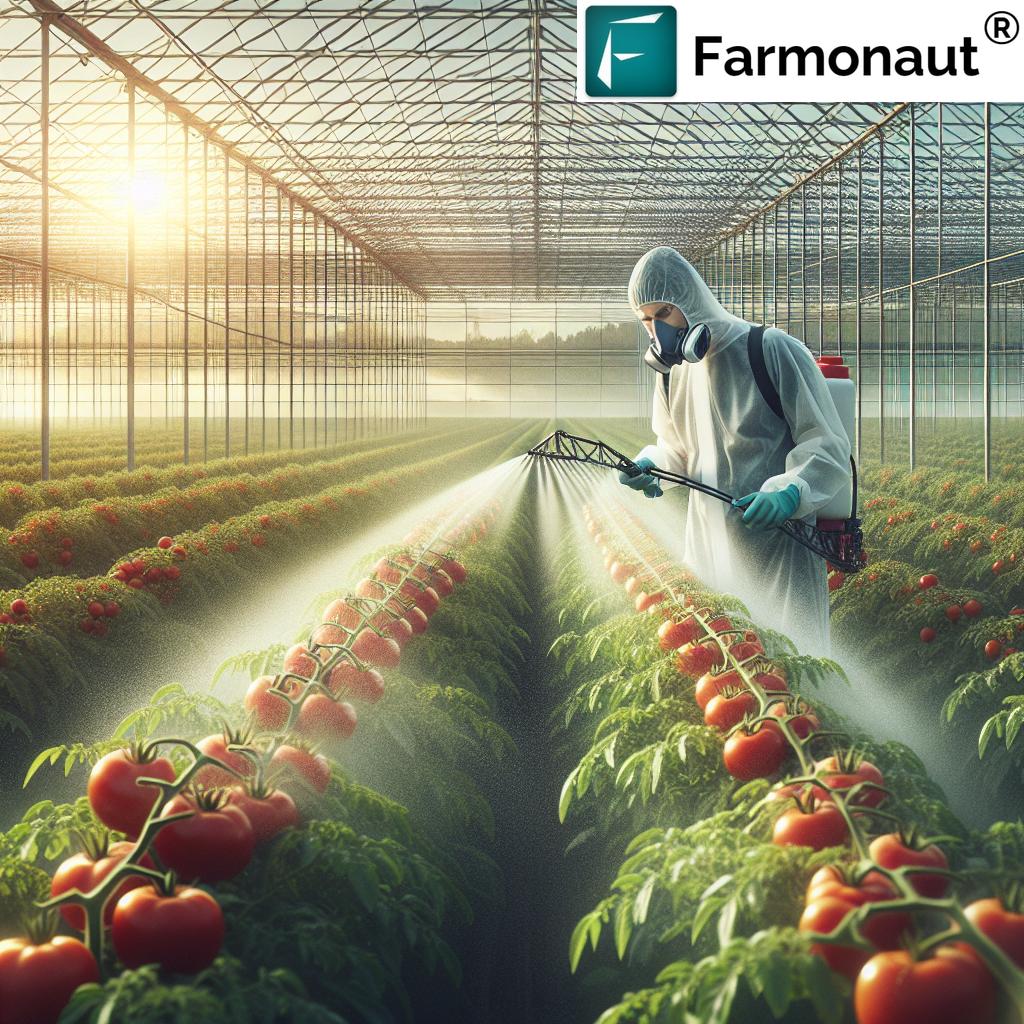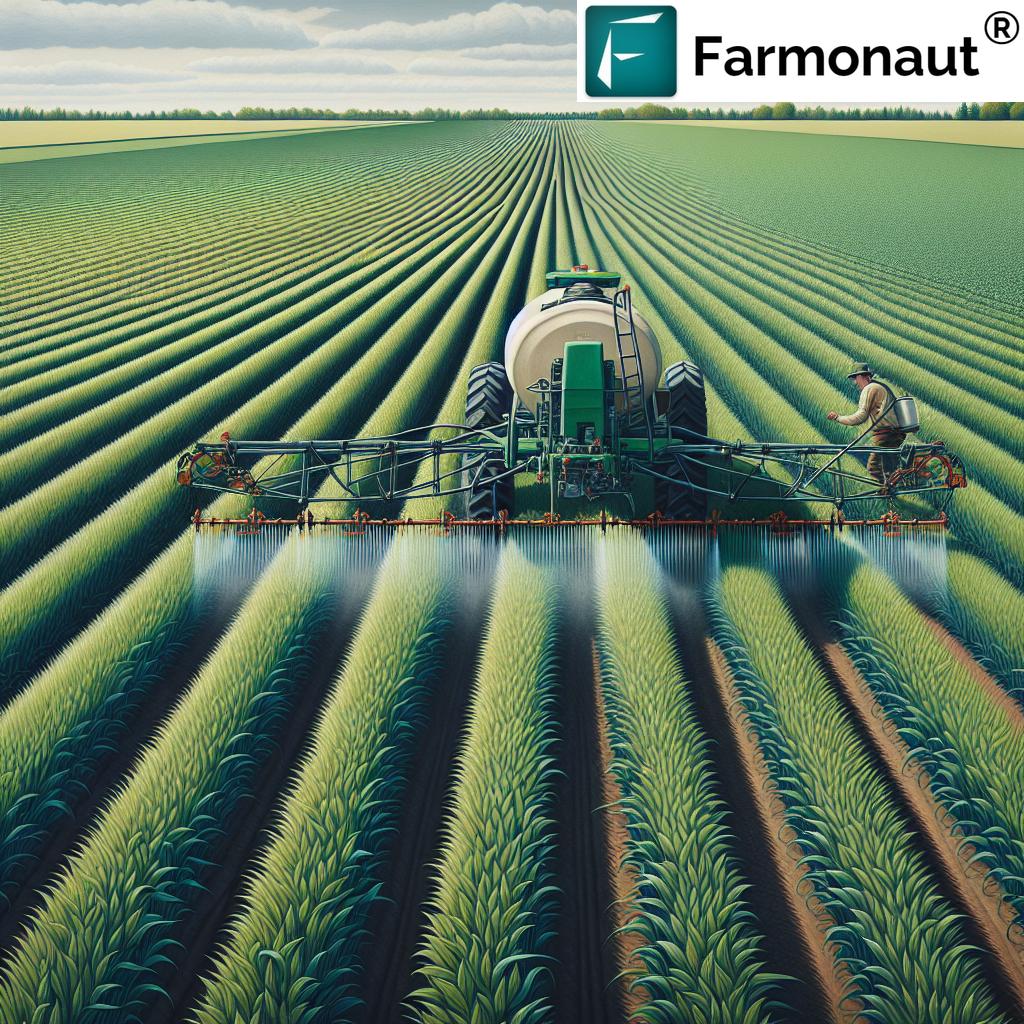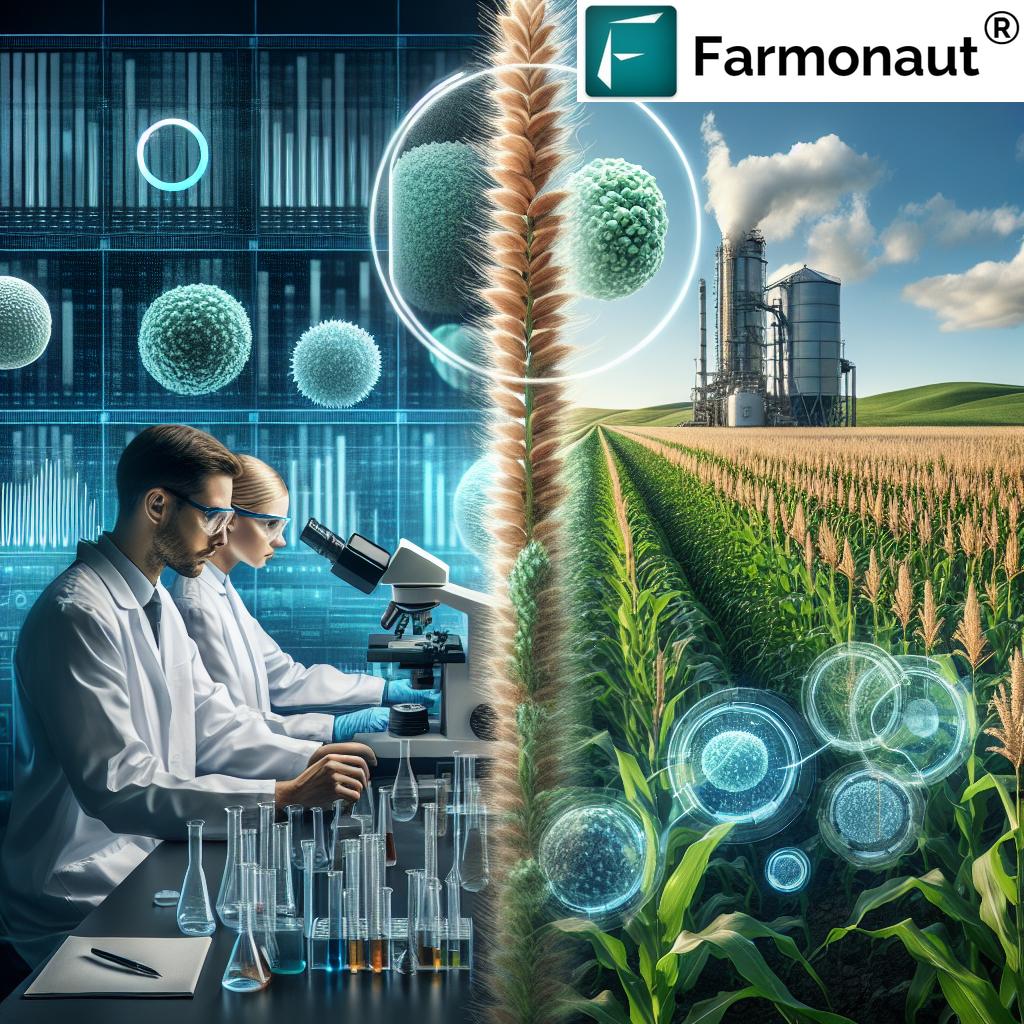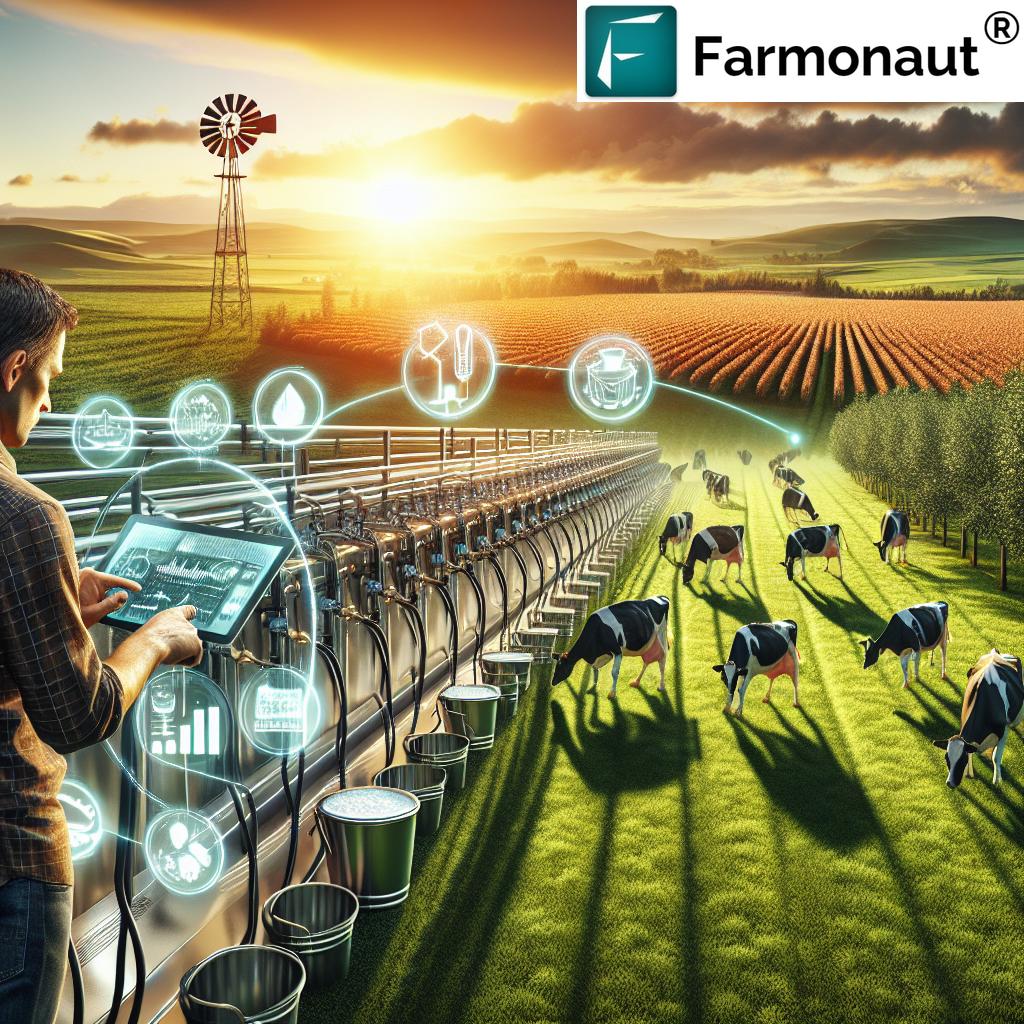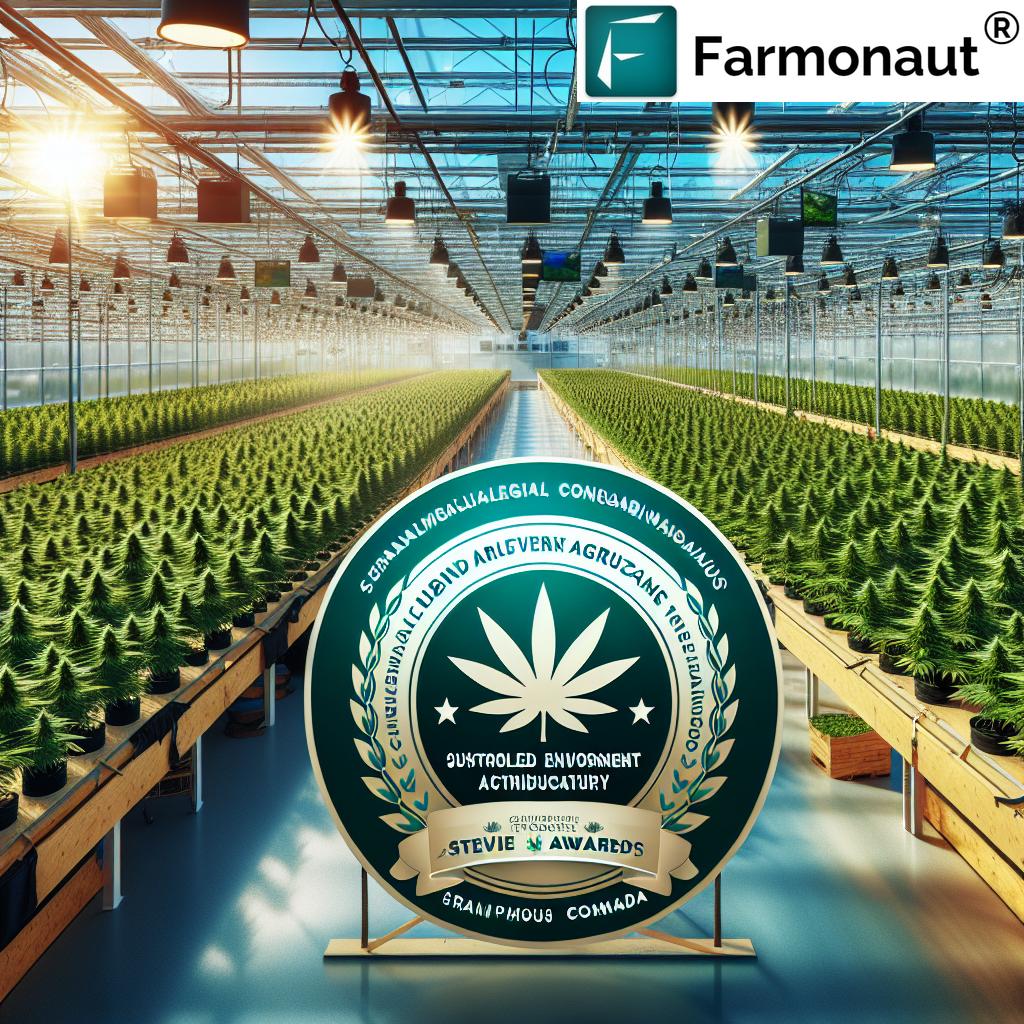Unlocking Retail Success: 10 AgTech Strategies for Produce Managers in Montréal to Boost Productivity and Reduce Waste
“Produce managers can reduce food waste by up to 30% through implementing smart farming techniques and digital tools.”
In the vibrant city of Montréal, Québec, where culinary excellence meets cultural diversity, produce managers play a crucial role in shaping the retail landscape. As we step into 2024, the challenges and opportunities in the agricultural supply chain have never been more pronounced. At Farmonaut, we understand the intricate balance between maintaining fresh produce quality, optimizing sales, and reducing waste. That’s why we’ve compiled this comprehensive guide to help produce managers in Montréal unlock retail success through innovative agtech solutions and strategic management practices.
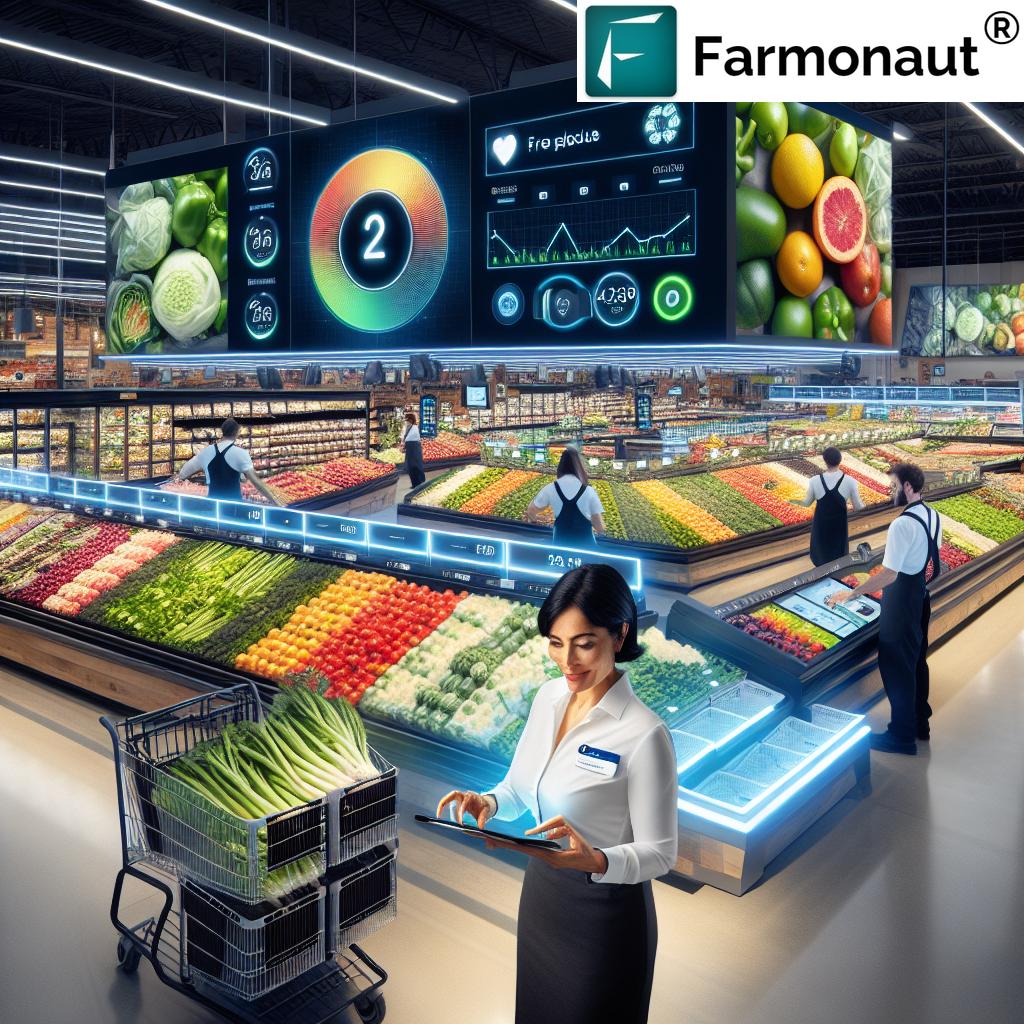
In this blog post, we’ll explore ten cutting-edge strategies that combine produce management expertise with retail agriculture technology to improve farm-to-store efficiency, enhance relationships with store employees, and drive consumer engagement. Whether you’re a seasoned category manager or a grower looking to understand retail dynamics better, this guide will provide you with actionable insights to transform your produce department into a hub of productivity and sustainability.
1. Embracing Smart Farming Technologies for Better Inventory Management
Smart farming is revolutionizing the way we approach produce management. By leveraging advanced technologies, produce managers can gain unprecedented insights into their inventory, leading to more accurate forecasting and reduced waste.
- Implement IoT sensors: Deploy Internet of Things (IoT) devices throughout your store to monitor temperature, humidity, and ethylene levels in real-time. This data can help you maintain optimal conditions for different types of produce, extending shelf life and reducing spoilage.
- Utilize AI-powered demand forecasting: Artificial Intelligence can analyze historical sales data, seasonal trends, and even local events to predict demand more accurately. This allows for smarter ordering and reduces the risk of overstocking or understocking.
- Adopt blockchain for traceability: Implement blockchain technology to track produce from farm to store. This not only ensures food safety but also allows you to quickly identify and remove any compromised products, minimizing waste and protecting consumer health.
At Farmonaut, we offer cutting-edge satellite-based crop health monitoring solutions that can benefit the entire supply chain. Our technology allows growers to optimize their yields, which in turn provides retailers with higher quality produce. By partnering with suppliers who use such advanced farming techniques, produce managers can ensure a steady supply of premium fruits and vegetables.
2. Optimizing Produce Department Layout for Maximum Efficiency
The layout of your produce department can significantly impact both sales and waste reduction. A well-designed space not only attracts consumers but also facilitates efficient restocking and rotation practices.
- Implement data-driven planograms: Use sales data and consumer traffic patterns to create dynamic planograms that optimize product placement and maximize visibility for high-margin items.
- Create micro-climates: Design your department with different temperature and humidity zones to cater to the specific needs of various produce types, extending their shelf life.
- Incorporate mobile displays: Invest in movable display units that allow for quick reconfiguration of the department based on seasonal offerings or promotional events.
By optimizing your produce department layout, you can enhance the shopping experience while simultaneously improving operational efficiency. This strategy aligns perfectly with our mission at Farmonaut to make precision agriculture accessible and beneficial throughout the entire supply chain.
3. Implementing Advanced Inventory Tracking Systems
Accurate inventory management is crucial for reducing waste and ensuring product availability. By implementing advanced tracking systems, produce managers can maintain optimal stock levels and respond quickly to changes in demand.
- Adopt RFID technology: Radio-Frequency Identification tags can provide real-time tracking of produce from receiving to point of sale, improving accuracy and reducing labor costs associated with manual inventory checks.
- Implement automated reordering systems: Set up systems that automatically generate purchase orders based on predefined inventory thresholds, ensuring you always have the right amount of stock on hand.
- Utilize mobile inventory management apps: Equip your team with mobile devices that allow for real-time inventory updates and easy access to product information, enabling them to make informed decisions on the sales floor.
At Farmonaut, we understand the importance of accurate data in decision-making. Our satellite-based monitoring systems provide growers with precise information about crop health and yield predictions, which can be invaluable for produce managers in planning their inventory strategies.
Explore Farmonaut’s API for advanced data integration
4. Enhancing Employee Training and Engagement
Well-trained and engaged employees are the backbone of any successful produce department. By investing in your team’s development, you can improve productivity, reduce errors, and enhance customer service.
- Develop comprehensive training programs: Create structured training modules that cover everything from produce handling and food safety to customer service and merchandising techniques.
- Implement cross-training initiatives: Encourage employees to learn multiple roles within the department, increasing flexibility and providing opportunities for professional growth.
- Utilize gamification in training: Incorporate game-like elements into your training programs to increase engagement and retention of important information.
At Farmonaut, we believe that knowledge is power. That’s why we offer educational resources on our platform to help farmers understand and implement sustainable agriculture practices. Similarly, produce managers can leverage technology to create engaging and effective training programs for their teams.
5. Leveraging Data Analytics for Informed Decision-Making
In today’s data-driven retail environment, produce managers must harness the power of analytics to make informed decisions that drive sales and reduce waste.
- Implement real-time sales dashboards: Use digital dashboards that display key performance indicators (KPIs) in real-time, allowing for quick adjustments to pricing, promotions, and inventory levels.
- Analyze consumer behavior patterns: Utilize data analytics tools to understand shopping habits, preferences, and trends specific to your Montréal customer base.
- Conduct regular performance reviews: Set up automated reports that analyze department performance across various metrics, helping you identify areas for improvement and opportunities for growth.
At Farmonaut, we specialize in providing data-driven insights for agricultural decision-making. Our AI-powered advisory system, Jeevn AI, delivers personalized recommendations to farmers based on real-time data analysis. Produce managers can apply similar principles to retail operations, using data to optimize every aspect of their department.
“Montreal’s produce retailers can boost sales by 25% by optimizing department productivity and enhancing consumer engagement strategies.”
6. Implementing Sustainable Practices to Reduce Waste
Sustainability is not just a buzzword; it’s a crucial aspect of modern retail that can significantly impact your bottom line while appealing to environmentally conscious consumers in Montréal.
- Introduce composting programs: Set up an in-store composting system for unsold produce, reducing waste sent to landfills and potentially creating a new revenue stream through compost sales.
- Partner with local food banks: Establish relationships with local charities to donate unsold but still edible produce, reducing waste while supporting the community.
- Implement packaging reduction initiatives: Explore innovative, eco-friendly packaging solutions or encourage customers to bring their own reusable produce bags.
At Farmonaut, we’re committed to promoting sustainable agriculture practices. Our platform includes features for carbon footprint tracking, helping businesses monitor and reduce their environmental impact. Produce managers can apply similar principles to their departments, using technology to track and minimize waste.
Check out our API Developer Docs for integration possibilities
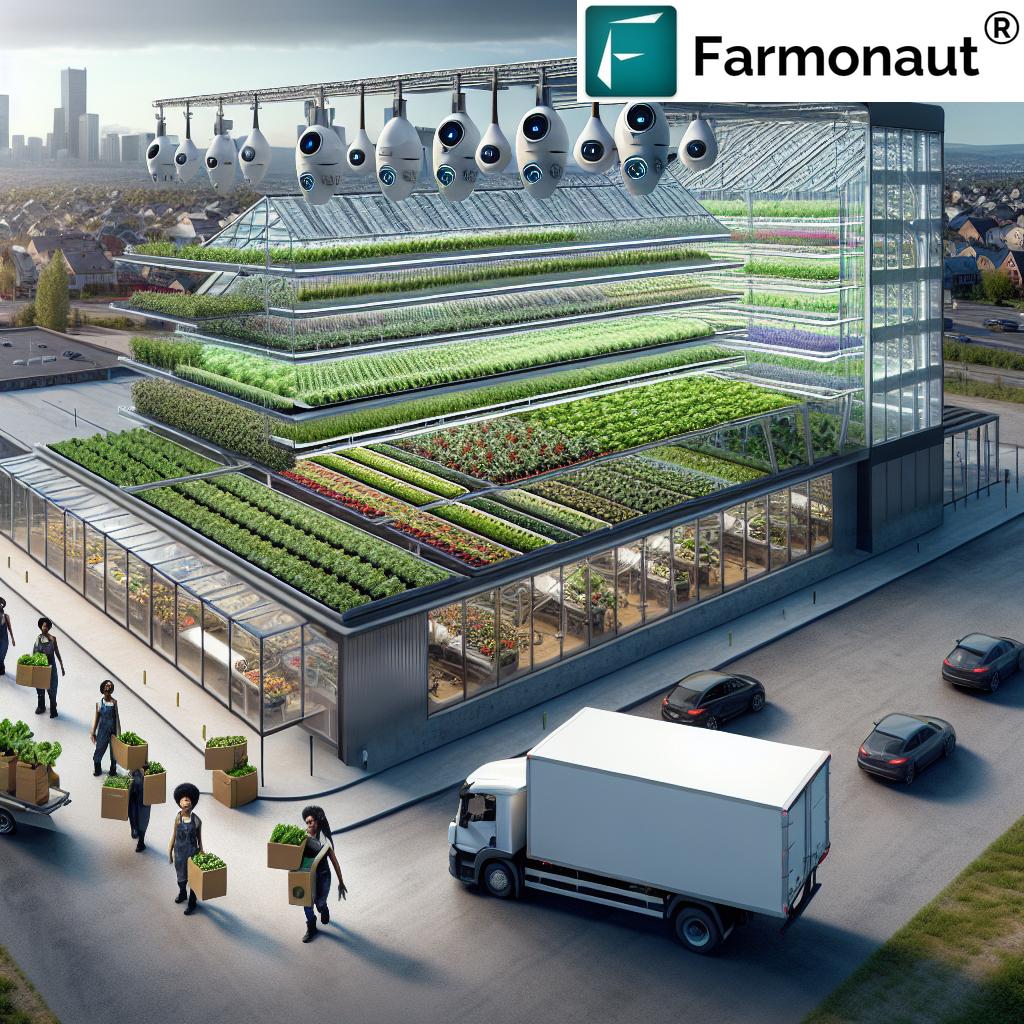
7. Enhancing Consumer Engagement Through Technology
In the digital age, engaging with consumers extends beyond the physical store. Leveraging technology can help produce managers create meaningful connections with their customers, driving loyalty and sales.
- Develop a produce department app: Create a mobile application that provides customers with nutritional information, recipes, and real-time updates on product availability and promotions.
- Implement QR codes for product information: Place QR codes on product displays that customers can scan to access detailed information about the produce, including origin, nutritional value, and recipe ideas.
- Utilize social media for engagement: Maintain active social media profiles to share tips, recipes, and behind-the-scenes looks at your produce department, fostering a sense of community among your customers.
At Farmonaut, we understand the power of digital engagement. Our mobile apps provide farmers with easy access to crucial information about their crops. Similarly, produce managers can use technology to keep their customers informed and engaged, building lasting relationships that translate into increased sales and loyalty.
8. Optimizing the Cold Chain for Maximum Freshness
Maintaining the cold chain is critical for preserving the quality and extending the shelf life of fresh produce. By implementing advanced cold chain management techniques, produce managers can significantly reduce waste and improve product quality.
- Invest in smart refrigeration systems: Implement IoT-enabled refrigeration units that provide real-time temperature monitoring and alerts, ensuring optimal storage conditions at all times.
- Utilize temperature-logging devices: Deploy portable temperature loggers throughout the supply chain to track and maintain the cold chain from farm to store.
- Implement a First-Expired-First-Out (FEFO) system: Use technology to track expiration dates and automatically prioritize the sale of products nearing the end of their shelf life.
At Farmonaut, we recognize the importance of maintaining product quality throughout the supply chain. Our satellite-based monitoring systems help farmers optimize harvest times, ensuring that produce reaches retailers at peak freshness. Produce managers can extend this focus on quality by implementing rigorous cold chain management practices in their stores.
9. Implementing Dynamic Pricing Strategies
Dynamic pricing can help produce managers optimize sales and reduce waste by adjusting prices based on various factors such as demand, inventory levels, and product freshness.
- Utilize electronic shelf labels (ESLs): Implement ESLs to enable quick and easy price updates, allowing for real-time adjustments based on inventory levels and expiration dates.
- Develop an AI-powered pricing algorithm: Create a system that automatically adjusts prices based on factors such as time of day, day of the week, and current inventory levels.
- Implement time-based discounting: Set up a system that automatically applies discounts to products nearing their expiration date, encouraging quicker sales and reducing waste.
At Farmonaut, we provide farmers with real-time data on crop health and market trends, enabling them to make informed decisions about when to harvest and sell their produce. Similarly, produce managers can use data-driven insights to implement dynamic pricing strategies that maximize profits while minimizing waste.
10. Fostering Strong Relationships with Local Growers
Building strong relationships with local growers can provide produce managers with a competitive edge, ensuring access to fresh, high-quality produce while supporting the local economy.
- Implement a local sourcing program: Establish partnerships with Québec farmers to source a portion of your produce locally, reducing transportation costs and improving freshness.
- Create a grower communication platform: Develop a digital platform that allows for real-time communication between your store and local growers, facilitating quick adjustments to orders based on demand and availability.
- Host meet-the-farmer events: Organize in-store events where customers can meet local growers, fostering a sense of community and increasing interest in locally sourced produce.
At Farmonaut, we believe in the power of technology to connect various stakeholders in the agricultural supply chain. Our platform provides tools for efficient communication and data sharing between farmers and buyers. Produce managers can apply similar principles to strengthen their relationships with local growers, ensuring a steady supply of fresh, locally sourced produce.
AgTech Solutions for Produce Managers
| Strategy Name | Description | Benefits | Implementation Difficulty | Estimated Cost Savings (%) | Waste Reduction Potential | Employee Engagement Impact |
|---|---|---|---|---|---|---|
| Smart Farming Technologies | Implement IoT sensors and AI-powered forecasting | Improved inventory management, reduced waste | Medium | 15-20% | High | Medium |
| Optimized Department Layout | Data-driven planograms and micro-climates | Increased sales, extended product shelf life | Medium | 10-15% | Medium | Low |
| Advanced Inventory Tracking | RFID technology and automated reordering | Real-time inventory updates, reduced labor costs | Hard | 20-25% | High | Medium |
| Enhanced Employee Training | Comprehensive programs with gamification | Improved productivity, better customer service | Easy | 5-10% | Medium | High |
| Data Analytics | Real-time dashboards and performance reviews | Informed decision-making, optimized operations | Medium | 15-20% | Medium | Medium |
| Sustainable Practices | Composting and food bank partnerships | Reduced waste, improved brand image | Easy | 5-10% | High | Medium |
| Consumer Engagement Tech | Mobile apps and QR codes for product info | Increased customer loyalty, higher sales | Medium | 10-15% | Low | Low |
| Optimized Cold Chain | Smart refrigeration and FEFO systems | Extended product life, reduced spoilage | Hard | 20-25% | High | Low |
| Dynamic Pricing | AI-powered pricing and electronic shelf labels | Optimized sales, reduced waste | Hard | 15-20% | High | Low |
| Local Grower Relationships | Local sourcing and grower communication platforms | Fresher produce, community engagement | Medium | 10-15% | Medium | High |
Conclusion
As we’ve explored in this comprehensive guide, the role of produce managers in Montréal’s retail landscape is evolving rapidly. By embracing these ten agtech strategies, you can significantly boost productivity, reduce waste, and enhance your department’s overall performance. From leveraging smart farming technologies to fostering strong relationships with local growers, each strategy offers unique benefits that can contribute to your retail success.
At Farmonaut, we’re committed to supporting the entire agricultural supply chain with our innovative satellite-based solutions. While our primary focus is on helping farmers optimize their crop production, the benefits of our technology extend all the way to the retail level. By partnering with suppliers who use advanced farming techniques, produce managers can ensure a steady supply of high-quality, sustainably grown fruits and vegetables.
As you implement these strategies, remember that the key to success lies in continuous learning and adaptation. The retail agriculture technology landscape is constantly evolving, and staying ahead of the curve requires ongoing education and a willingness to embrace new ideas. We encourage you to explore the resources available through Farmonaut and other industry leaders to keep your skills sharp and your department thriving.
By combining traditional produce management expertise with cutting-edge agtech solutions, you can create a produce department that not only meets but exceeds the expectations of Montréal’s discerning consumers. Here’s to your success in unlocking the full potential of your retail produce operations!
FAQ Section
Q: How can Farmonaut’s technology benefit produce managers?
A: While Farmonaut primarily serves farmers, our satellite-based crop monitoring and AI advisory systems help optimize crop yields and quality. This translates to better produce for retailers, enabling managers to source high-quality fruits and vegetables more consistently.
Q: Are these agtech strategies suitable for small, independent stores in Montréal?
A: Absolutely! Many of these strategies can be scaled to fit the needs and budgets of smaller stores. Start with the most impactful and cost-effective solutions, such as employee training and basic inventory tracking, and gradually implement more advanced technologies as your business grows.
Q: How can I measure the success of implementing these agtech strategies?
A: Key performance indicators (KPIs) to track include reduction in food waste, increase in sales, improvement in inventory turnover, and customer satisfaction scores. Regularly analyze these metrics to gauge the effectiveness of your implemented strategies.
Q: What are some challenges I might face when implementing these strategies?
A: Common challenges include initial costs, employee resistance to change, and technical difficulties during implementation. Overcome these by creating a clear implementation plan, providing thorough training, and starting with pilot programs to demonstrate success before full-scale rollout.
Q: How often should I update my agtech systems and strategies?
A: Technology evolves rapidly, so it’s important to stay informed about new developments. Aim to review and update your systems annually, but be prepared to make changes more frequently if significant innovations emerge or if your current systems are underperforming.








